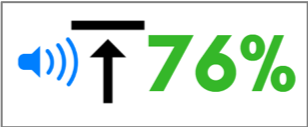Podcast Culture: The value of audio learning
I am a few years late to the podcast craze that’s sweeping popular culture in the United States. Living in the D.C. Metro area, my commute confines me to my car for no less than an hour and a half each day, Monday through Friday. Several months ago, my usual go-to methods for passing the time – a handful of Top 40 radio stations on repeat and spontaneous phone calls to family and friends – were failing to engage me like they once could. I was bored and listless and merely enduring what had grown to feel like an endless commute. So, I decided to jump on the audio listening bandwagon.
I downloaded Serial Podcast and dived into the captivating story of teenage heartbreak, murder, and the search for truth. Instantly I – like thousands of others who had listened to the story of Adnan Syed and Hae Min Lee – was mesmerized by the audible narrative unfolding between my dashboard and me. I began to look forward to the minutes before 9 a.m. and after 5 p.m. when I could rejoin Sarah Koenig in her quest for justice.
 According to Gary Vaynerchuk in his article, The Rise of Audio & Voice, consumers are beginning to replace entertainment, such as music, with information, such as podcasting. I certainly contributed to this trend. In fact, “audio is up 76 percent year-over-year, eclipsing video with 250 billion annual streams,” Vaynerchuk says. Additionally, in 2016, there was roughly one-and-a-half times more audio consumed than video, according to Nielsen statistics on streaming.
According to Gary Vaynerchuk in his article, The Rise of Audio & Voice, consumers are beginning to replace entertainment, such as music, with information, such as podcasting. I certainly contributed to this trend. In fact, “audio is up 76 percent year-over-year, eclipsing video with 250 billion annual streams,” Vaynerchuk says. Additionally, in 2016, there was roughly one-and-a-half times more audio consumed than video, according to Nielsen statistics on streaming.
Why? Quite simply, the mediums available to consume such content are more efficient and effective than ever before. They’re also mobile and they enable multitasking – one of America’s greatest addictions.
It’s no wonder that methods such as mobile learning and microlearning are gaining attention in our field. Many adults are receiving knowledge vastly from audio sources, and we as learning leaders must take note and heed the call. Design and deliver learning so that individuals are eager and able to consume it. For example, rather than dragging people into your in-person workshop, engage with them on their iPhones via bite-sized chunks of accessible and digestible information. Or, even simpler: Record subject-matter experts (SMEs) and weave the podcasts into your blended learning programs as we did for one of our federal clients. Learners may not be able to commit to completing several chapters of pre-course reading, but most likely they can make time to listen to a five-minute audio interview.
Our team’s most recent audio learning project focused on creating a series of podcasts as a part of a broader blended learning program that also included a series of animated videos and job aids. The five podcasts that came out to 43 minutes included interviews with a training program manager, a SME, an instructor, and a participant who shared their experiences about flipped classroom learning. We were able to capture some great lessons learned and tips and tricks for other training managers, SMEs, instructors, and participants who might want to deploy a flipped classroom or become involved in one.
There is much research being done about the future of jobs and the effects of artificial intelligence, augmented reality, and virtual reality on how we live, work, and learn. But as Vaynerchuk wisely observes: “Before AR and VR and AI, audio is going to be the next major platform shift for consumer attention. It’s here today! What are you going do?” What experiences do you have with audio learning? What plans are you forming to incorporate more audio in your mobile learning, microlearning, or blended learning initiatives? We would love to hear your thoughts.



